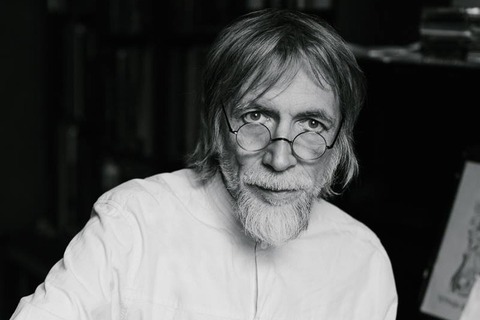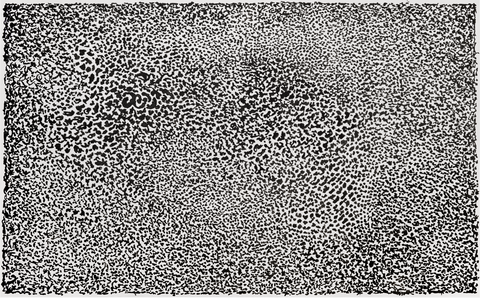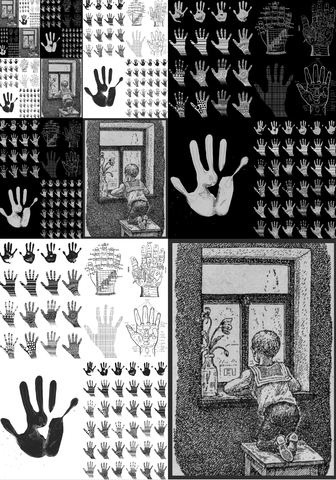
Martynov Vladimir
Born in 1946 in Moscow.
Artist, composer, philosopher, art theorist. Graduated from the Moscow Conservatory in composition and piano (1970). From 1973 to 1980 he was a member of the Moscow Experimental Studio of Electronic Music. He studied music of the Middle Ages and the Renaissance. Performed at various festivals, performing medieval, avant-garde, electronic and minimalist music. In 1999, together with Tatiana Grindenko, he created the instrumental ensemble Opus Posth. He has carried out joint projects with Lev Rubinstein, Dmitry Prigov and Leonid Fedorov (AuktsYon).
He has taught the history of liturgical singing at the Moscow Theological Academy and taught a course in musical anthropology at the Philosophy Department of Lomonosov Moscow State University. He is the author of numerous philosophical and musicological texts.
Vladimir Martynov's works combine philosophical, musical and visual intuitions that the artist has been developing for many years. Martynov works in a technique resembling bricolage, making new assemblages of seemingly unrelated elements of past and present human culture. Having developed the concept of autoarchaeology and turned it into a creative method, the artist creates ontograms - art objects devoid of human hierarchies and classifications; pure enumerations manifested from the flow of life. The artist's radical gesture consists in refusing to impose meaning on things and his own artobjects, identified here as violence against the living fabric of reality.
SOLO EXHIBITIONS:
- 2024 — “Ontograms of Autoarchaeology”, a—s—t—r—a gallery, Moscow
- 2023 — “Autoarchaeology. Ontography. Tactile Involvement”, Baltic Branch of the Pushkin State Museum of Fine Arts, Kaliningrad.
- 2020 — “Territory of Nonsense. Dances of Kaliyuga on Myasnitskaya”, Nadia Brykina Gallery, Moscow
SELECTED BOOKS:
- 2024 — Martynov V. I. Apologia Epimethea. MOSCOW: OGI
- 2022 — Martynov V. I. Where are you, Enkidu? The World after the Covid Revolution. SPB.: Jaromir Hladik press
- 2013 — Martynov V. I. Autoarchaeology at the turn of the millennium. M.: Publishing House “Classics-XXI”
- 2012 — Martynov V. I. Autoarchaeology. 1978-1998. M.: Publishing House “Classics-XXI”
- 2011 — Martynov V. I. Autoarchaeology. 1952-1972. M.: Publishing House “Classics-XXI”
- 2010 — Martynov V. I. Kazus Vita nova. M.: Classika-XXI
“The autoarchaeological method precisely seeks to reveal interrelationships and intersubjectivity. The basic premise of autoarchaeology is that “I am what I see, and I see what I am” - or, in other words, “My self is conditioned by what I see, and what I see is conditioned by my self”. This means that changing what I see changes my self, and changing my self changes what I see. Reality is revealed as an infinitely complex dynamic system of innumerable interrelationships and intersubjectivity, which is almost impossible to reveal with a traditional homogeneous and linear text. What is needed here is a text of a special kind - a text consisting of two or more heterogeneous sets of texts in free non-linear relations with each other. If “Autoarchaeology. 1952-1972” involves two text sets: a selection of children's and youth poems and commentaries on them, while in ”Autoarchaeology. 1978-1998” the chapters of ‘Treatise on Liturgical Singing’ are mixed with reminiscences about the time of its writing and supplemented with fragments of the inventory of the Savvino-Storozhevsky monastery of the XVII century. It seems to me that this is the only way to get closer not to what I want to say, but to what makes me say what I say and why I say it. And that is precisely the purpose of autoarchaeology.”
Vladimir Martynov
Autoarchaeology. 1978-1998
Publishing House “Classics-XXI”, 2012












